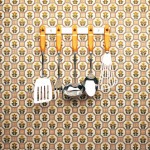Tips for putting your home on the market with young children.
The idea of selling your home can be quite daunting. Add to the equation a young child and the task may seem impossible.
Fortunately, that doesn’t have to be the case. Through careful planning, decluttering, and creating easy upkeep, the hassles of selling your current home and transitioning to your new one can be kept to a minimum. Here are five tips for selling your home with young children.
Know what you need ahead of time. The first step in preparing to put your house on the market when you have one or more young children is to analyze what your children need throughout the day, what they will need in the next couple of months, and what is unnecessary. With this information, you can create a plan for removing any unessential items.
The average listing period will range depending on where you live, but could be anywhere from a couple weeks to a couple months. You will need to plan for the cumulative amount of time, involving not only the timeframe until you go under contract, but the transaction period and moving time as well.
First, create a list of items of absolute necessity in your child’s daily activities. These will stay in your house and should remain easily accessible throughout the listing period. As you declutter the rest of the house, you’ll find you have additional room to store bottles, dishes, cleaning supplies and more. You can place these items in an organized fashion within a pantry or cabinets while you have showings, then remove them for use when you’re home.
Next, you’ll want to figure out what daily items your child will be needing in the coming months. One of the more difficult aspects of raising children is keeping up with their constant development. Planning months in advance will only heighten your awareness of this fact.
Items for the future should be divided into two different sections. The first should be for the next month or two – items which, regardless of how fast your home sells, will be needed but aren’t currently in use. Label and box these for storage within your home. The second group should be for items you may need should your house not sell in as timely a manner as you hope – plan for the worst and hope for the best.
Sell the Family Atmosphere. When selling your house, it’s important to remember who you will be marketing to. Especially if you’re located close to schools or parks, it’s a good possibility that many of your potential buyers either have or are considering having kids in the future. With this in mind, embrace your “family-oriented” home.
Remember, the average buyer does not have a great sense of creativity, so it’s important to show them the true potential of the house and each room within. You should have distinctly child-themed areas, but also areas specifically for adults such as the living room, master bedroom and office. The family room and kitchen, as well as the basement depending on your setup, can show off a more whole-family theme.
If you have a nursery or child’s room, play it up. Don’t make it look like just another bedroom – but don’t go overboard and have every baby trinket known to man scattered around. A unique room that shows your child’s personality through its design will help accentuate the space, as well as separate the house in the buyers’ minds from others they’ve seen. Rather than being just another three-bed, two-bath townhouse, you’re “the one with the awesome race car-themed room.”
If you do nothing else, declutter. Clutter is the bane of every listing agent’s existence. It creates a less inviting, small-looking space, which doesn’t allow the potential buyer to see the full potential of the room. By eliminating as much stuff as possible, not only will you create a welcoming environment, but you will also have a more manageable situation for yourself during the listing period.
One of the biggest clutter creators is toys. While creating an organized environment is imperative, that certainly doesn’t mean you have to get rid of every GI Joe, Barbie doll, or Mickey Mouse stuffed animal your child has. Paring down your kid’s current collection is not only helpful in minimizing clutter, it can also create renewed interest when you reintroduce the toy to him or her after the moving process.
Shop around for baskets and bins fitting your home’s design style that will create a fashionable storage area for any loose toys or other items you keep in your family room or other areas you aim to market as primarily family or adult areas.
Pricing Considerations. The argument for pricing your house aggressively is always preferential to attract the highest number of buyers in the shortest amount of time to reach top dollar, but in no situation more so than when a child is involved. The day-to-day hassle of maintaining a pristine house, always ready to be shown, can be taxing on both parent and child alike.
Create a Schedule and Be Ready to Change It. Many real estate agents today use scheduling services for showing appointments that will contact you to confirm or deny times requested for showings. In an effort to increase viewership as much as possible, you’ll want to acquiesce to the requests of as many buyers as possible. That said, the timing may not always be in line with meals, naps or other constants in your child’s daily routine.
In an effort to find a happy medium, have your agent institute a minimum notification time to give you an adequate heads up prior to buyers showing up at your house, whether it be two or 24 hours. Advance notice will also allow you to attempt to adjust your child’s schedule as best as possible if necessary.
During the listing period, it’s best to spend as much time as possible outside the house. Use the time to visit friends and family, adventure through parks and zoos or take a walk in a local park. Not only will you and your child enjoy the shared experience of exploring new areas, but you will rest easier knowing you won’t have to clean as much as you would if you stayed home.
Listing a house while you have children doesn’t have to be laborious or overly stressful. By carefully creating a manageable environment at home through organization and foresight, you can effectively make your home appealing and marketable while keeping your sanity. Just remember, prepare in advance, declutter and be flexible. ~Ray Boss Jr.








